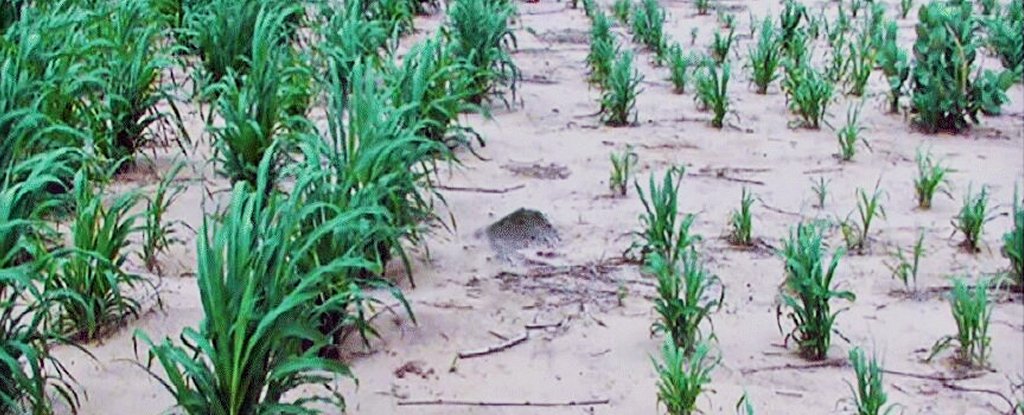These days, peeing on your food plants may be considered a gross and wacky gardening hack, despite the practice having been proven beneficial for thousands of years.
But our modern squeamishness has meant gardeners and farmers alike must resort to expensive fertilizers to provide their crops with the much-needed nutrients found free in our pee.
Yet some of the farmers most in need of these additional nutrients often don't have access to fertilizers. Many farmers, like those in remote regions of the Republic of Niger, are facing depleting soil nutrients on top of harsher weather conditions and are struggling to produce crops.
So a team led by National Institute of Agricultural Research of Niger researcher Hannatou Moussa looked into resurrecting this ancient practice, which is being used in parts of Asia, of using pee as fertilizer, with some modern twists of course, like sanitizing it to keep everyone safe.
A group of Niger women volunteered to help Moussa and colleagues test the urine fertilizer on their farms. In these harsh lands of sub-Saharan Africa, women contribute a higher share of labor for food production than men, but they do not have control of the land or resources, nor easy access to information.
These women often end up with the most nutrient-poor fields on which to grow a regional staple grain – pearl millet (Cenchrus americanus).
First, the women named the fertilizing product Oga, which translates to 'the boss' in the Igbo language. This was to help smooth over the social, religious and cultural barriers to open discussions on the use of human urine.
The volunteers were then divided into two groups – the first continued using their traditional farming methods, while the second applied Oga, with and without animal manure, to their experimental plots after receiving training on how to safely use it.
Making industrial fertilizer usually involves intensive mining of ores containing phosphorus and potassium. Burning natural gas at high temperatures sequesters the much-needed nitrogen from the air we breathe – in one of the most CO2-intensive chemical making reactions. Among many other things, plants use all three of these elements for photosynthesis.
Yet our urine is packed full of phosphorus, potassium and nitrogen already in an easy-to-access form.
What's more, compared to our poop, pee is relatively sterile when it leaves our bodies thanks to the ammonia in it. Just passively storing canisters in temperatures between 22 to 24 °C (71 to 75 °F) for 2 to 3 months is enough to destroy remaining pathogens that can withstand long periods within the acidic liquid.
So the women were trained in this sanitization process and how to dilute the resulting Oga for use. For the first few years they applied the Oga in combination with organic manure, and when that was successful they were game enough to try Oga alone.
Across three years (2014 to 2016) and 681 trials, those who used Oga experienced an average 30 percent increase in pearl millet yield. The difference was so clear that many other women in the area started using Oga.
"Oga is a low risk, low financial input fertilizer option ready for dissemination on sandy Sahelian sites with low pearl millet yield level," the researchers wrote in their paper.
If we used this product in industrialized countries too it could not only increase crop yields and reduce the fossil fuel intensive resources needed to grow them but make our sanitation systems more sustainable as well. Groups in Sweden, the US and Australia are also looking into using widespread urine fertilizer.
"Millions and millions of dollars a year are spent trying to treat our waste before it goes into receiving waters for acceptable nitrogen and phosphorus criteria," Griffith University environmental health researcher Cara Beal told the Australian Broadcasting Corporation earlier this year, when discussing possible Australian trials.
"But if we can close that nutrient loop it'd be very sensible in terms of sustainability, the circular economy and looking after our planet a little bit better."
Two years after the experiment in Niger, more than a thousand women farmers had begun using Oga to fertilize their crops.
This research was published in Agronomy for Sustainable Development.
- Karlston, Mutton and funkyy
-

 3
3




Recommended Comments
Join the conversation
You can post now and register later. If you have an account, sign in now to post with your account.
Note: Your post will require moderator approval before it will be visible.